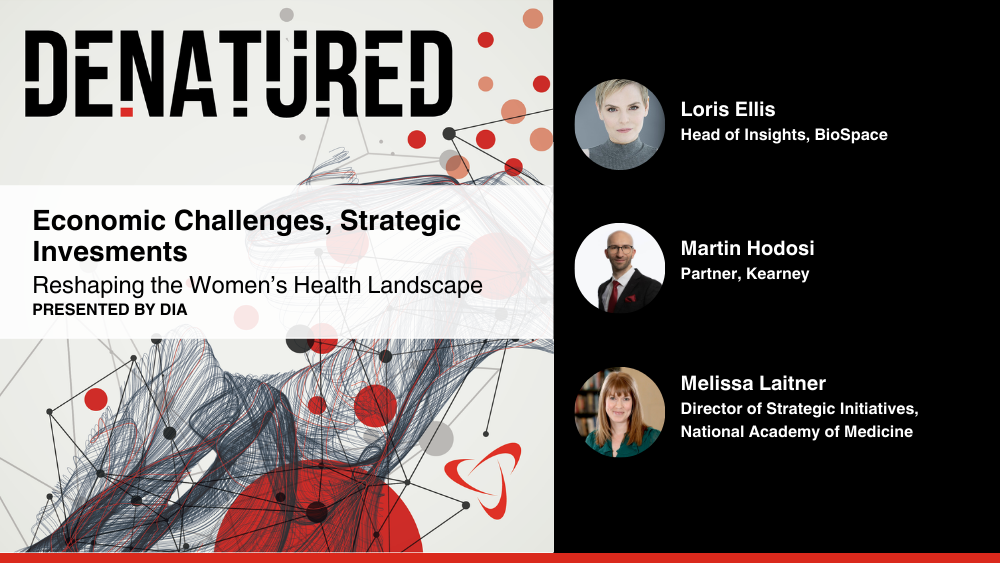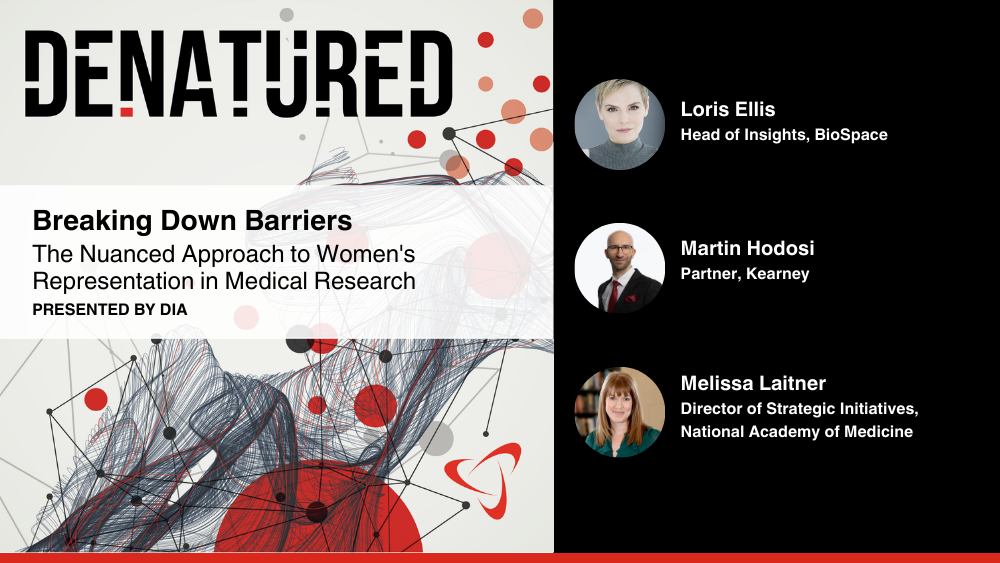Health-focused nonprofits like the Drug Information Association (DIA) serve as crucial bridge-builders in the healthcare ecosystem during a time of uncertainty.
Nonprofits in the global healthcare space have evolved to become crucial connectors, particularly where government capacity reaches its limits. “Since we have more independence and flexibility, we can do work that is mission-focused and encourages collaborations across sectors,” explained Maria Vassileva, PhD, chief science and regulatory officer at the Drug Information Association (DIA), one of the largest global life science membership associations that brings together regulators with medical product developers and patients as the three main stakeholder groups it serves. This adaptability allows health-focused nonprofits to provide “real-time convening platforms for emerging crises” and remain nimble despite occasional resource constraints in terms of infrastructure and scale.
A Bridge Builder
Within this role, organizations, such as DIA, play a unique part in sustaining momentum on priority areas that may no longer receive government attention or funding. “We help bridge gaps by ensuring that essential life science R&D and healthcare topics continue to be explored and addressed, even when they are no longer prioritized through formal funding mechanisms,” according to Tamei Elliott, director, global scientific content at DIA. By facilitating ongoing dialogue and multi-stakeholder collaboration, DIA helps maintain momentum on complex challenges that require long-term commitment and cross-sector coordination. With a
60-year history as a life sciences member association, DIA exemplifies this bridge-building function. In an era dominated by misinformation, DIA “curates trustworthy knowledge exchanges” by bringing diverse stakeholders together. Vassileva highlighted, “This approach does not assume that everyone defines a certain problem the same way but instead starts with a shared understanding and overcomes silos.” This methodology ensures balanced perspectives while maintaining a solutions-oriented approach.
Neutrality as a Cornerstone of Effectiveness
For nonprofits operating in the healthcare space, neutrality does not equate to silence on important issues. Rather, “it involves elevating all voices with representatives participating and speaking up in balanced ways, with the focus consistently on solutions that benefit patients rather than specific organizations or agendas,” stated Elliott.
Vassileva stressed, “As an organization, neutrality for DIA means not pushing a specific agenda but representing the values of our members who come from various sectors – academic, government, industry, nonprofit and technology innovator organizations.” This balanced approach creates an environment where key leaders in the space are able to speak openly, share concerns, and engage without fear of bias. Such environments encourage honest conversations, even on sensitive topics, while keeping innovative science and improving patient outcomes at the forefront of all discussions.
Critical Gaps in the Healthcare Ecosystem
Nonprofit organizations address several significant gaps in today’s healthcare landscape:
- Cross-Sector Collaboration
Vassileva and Elliott agreed, “Big challenges require various types of expertise to address collectively.” Nonprofits bring together stakeholders from across the drug and medical device development spectrum to tackle complex problems that no single sector could address alone. This convening power becomes particularly valuable when addressing multifaceted healthcare challenges. - Diverse Perspective Integration
By facilitating both information sharing and consensus building around innovative solutions, nonprofits help identify blind spots and develop more comprehensive approaches to healthcare challenges. Organizations like DIA break down silos, allowing for holistic problem-solving that considers impacts across the entire healthcare continuum. - Real-Time Knowledge Exchange
During uncertainty, real-time cross-sector knowledge and intelligence sharing helps leaders make better decisions. This function has enabled organizations like DIA to establish scientific priorities in areas like cell and gene therapy, women’s health, and responsible AI utilization across the medical product development continuum—creating a guiding star for future program development.
Global Collaboration Through Convening Power
Annual gatherings like DIA’s Global Annual Meeting (DIA 2025) demonstrate how nonprofits can leverage their neutral position to bring together “thousands of experts from the pharmaceutical and biotechnology industry together with regulators, key opinion leaders from academia and other nonprofits, patients, healthcare providers, payors, investors, start-up companies and technology innovators,” noted Vassileva.
Unlike more narrowly focused conferences that typically only focus on a single therapeutic area or serve one of the many professional categories of experts, these cross-cutting events address topics relevant to multiple stakeholders simultaneously. Elliott explained, “These unique forums generate meaningful insights that can lead to action and change” by facilitating conversations that might not happen in more siloed environments.
Key Healthcare Priorities: Innovation and Sustainability
DIA 2025 provides a unique opportunity for global leaders to advance critical healthcare priorities through focused initiatives created at the conference. DIA curates the presentations and sessions for DIA 2025 in the realm of emerging technologies, verifying that crucial discussions and case studies are shared across various healthcare sectors.
By leveraging years of specialty meetings and accumulated case studies, organizations like DIA help advance evolving fields, creating frameworks that bridge the communication gaps between clinical trials and real-world applications.
Nonprofits also play a critical role in supporting the development of innovative therapies, particularly in areas like cell and gene therapy. Their work addresses complex challenges including regulatory harmonization, reimbursement models to ensure wider access to these innovative therapies, and standardization of manufacturing approaches. Elliott noted, “By convening experts across sectors, DIA 2025 helps navigate the scientific, regulatory, and economic barriers that might otherwise impede patient access to breakthrough treatments.”
“Supply chain resilience has emerged as another key priority,” Vassileva added, “with nonprofits leading conversations on drug shortages and the importance of adopting global standards like Identification of Medicinal Products (IDMP).” These initiatives bring together patient and healthcare provider perspectives to include them with regulatory, policy and industry perspectives, which ensures that the full spectrum of stakeholder needs are addressed. Similarly, DIA has committed to continue to advocate for the inclusion of diverse populations in clinical research by continually engaging with the WHO and the FDA.
Champion of Patient-Centered Approaches
Through specialized initiatives like rare disease town halls that include payor perspectives, DIA helps stakeholders design clinical trials that not only meet regulatory requirements but also address reimbursement challenges on a global level. Through DIA, the perspectives come together in forums where regulatory and financial considerations can be discussed collaboratively, with the ultimate goal of improving patient access to innovative therapies.
DIA’s approach to rare diseases exemplifies this function: “Each year during our Global Annual Meeting, we host a FDA town hall focused on rare diseases,” stated Elliott, and we try to encourage participation from payors to address reimbursement issues. Vassileva continued, “In this forum all of the stakeholders are able to both discuss and communicate externally all aspects of the challenges of the drug development and approval process, from clinical trial design to regulatory approval requirements to reimbursement.”
The Future of Nonprofit Impact
As healthcare continues to evolve, nonprofit organizations’ ability to convene diverse stakeholders, maintain neutrality while advocating for patients, and foster cross-sector collaboration positions them as indispensable contributors to healthcare innovation.
By serving as trusted conveners, knowledge curators, and bridge-builders, nonprofits, such as DIA, help the healthcare ecosystem overcome siloed thinking, address emerging crises with agility, and ultimately advance their shared mission of improving patient outcomes through responsible innovation and consensus building. DIA is focused on priorities around utilization of artificial intelligence in the medical product development space and healthcare, achieving a higher level of global harmonization around regulations for cell and gene therapy approval, promoting inclusive clinical trials and women’s health, and solving the problems of drug shortages.
All of these topics will be further discussed during the 2025 DIA Global Annual Meeting.
This article was written in collaboration with DIA.
The insights team analyzes and comments on industry trends and creates thought leadership content for BioSpace and clients. The head of insights, Lori Ellis, can be contacted via lori.ellis@biospace.com. Follow her on LinkedIn.







